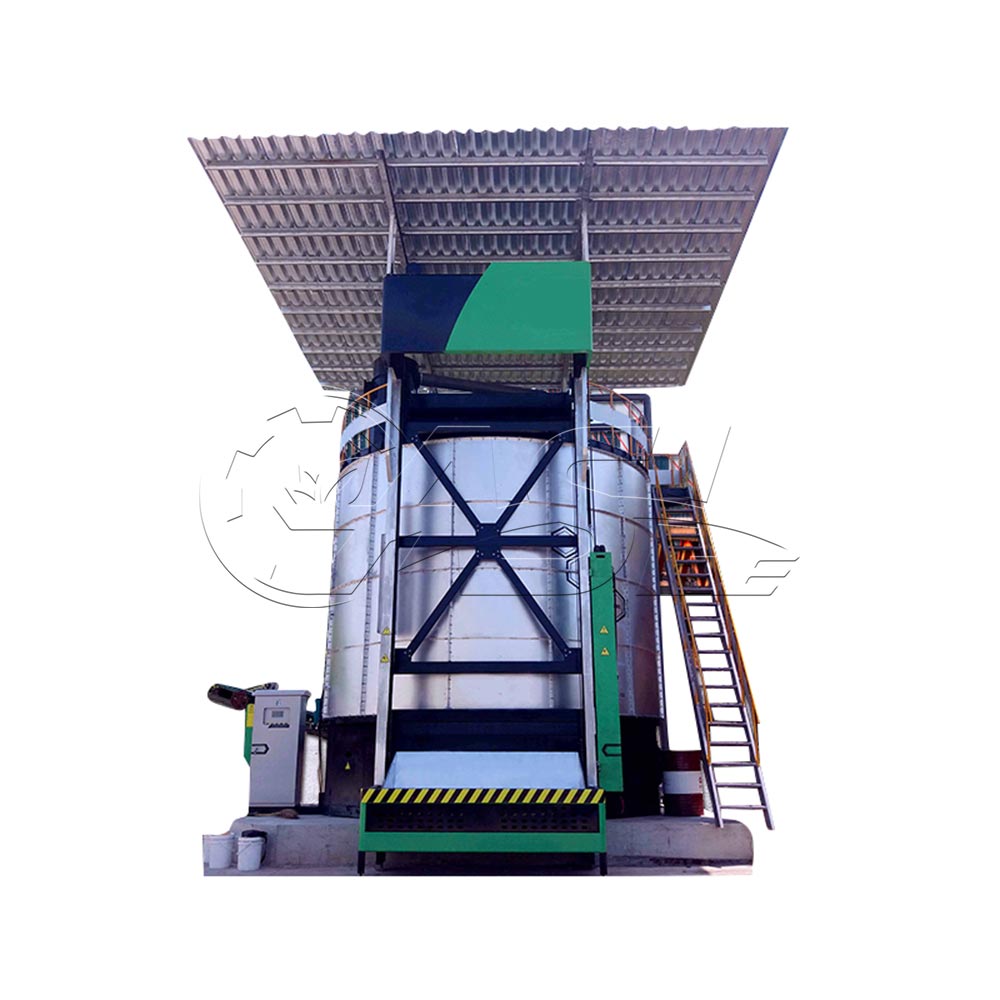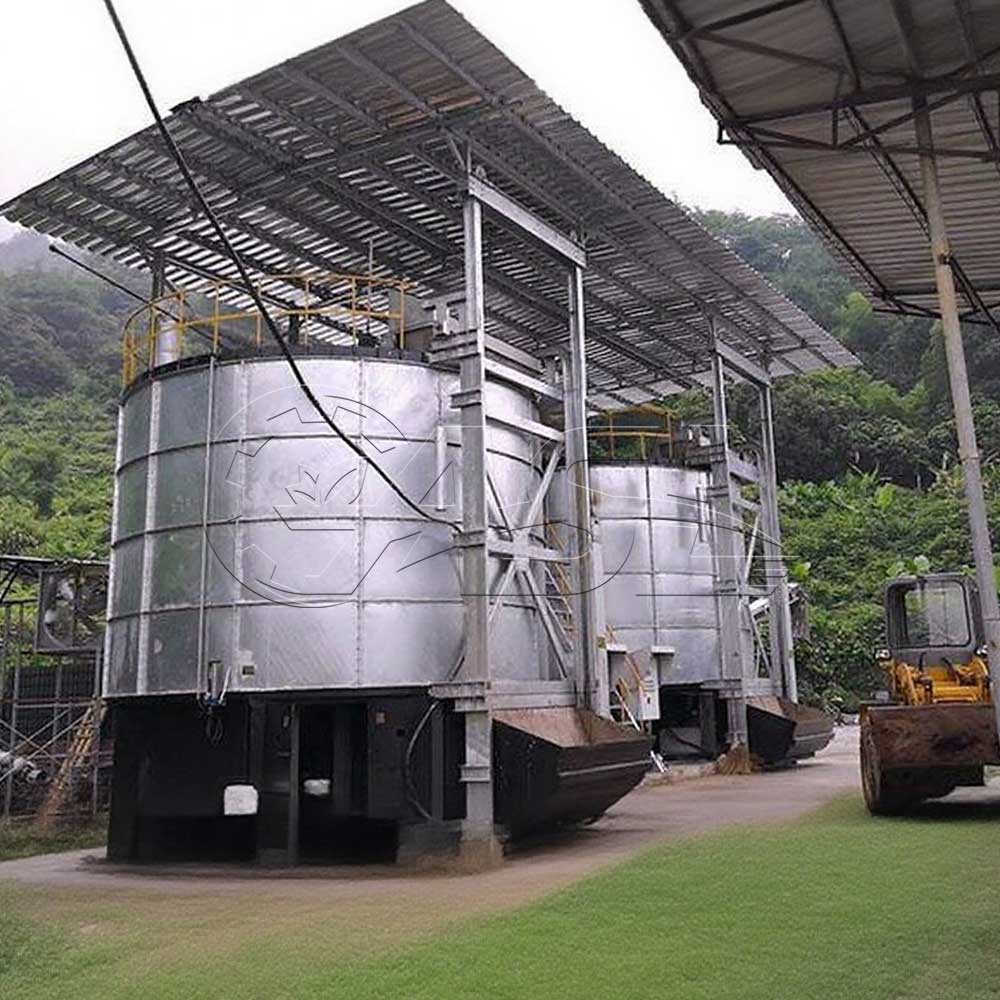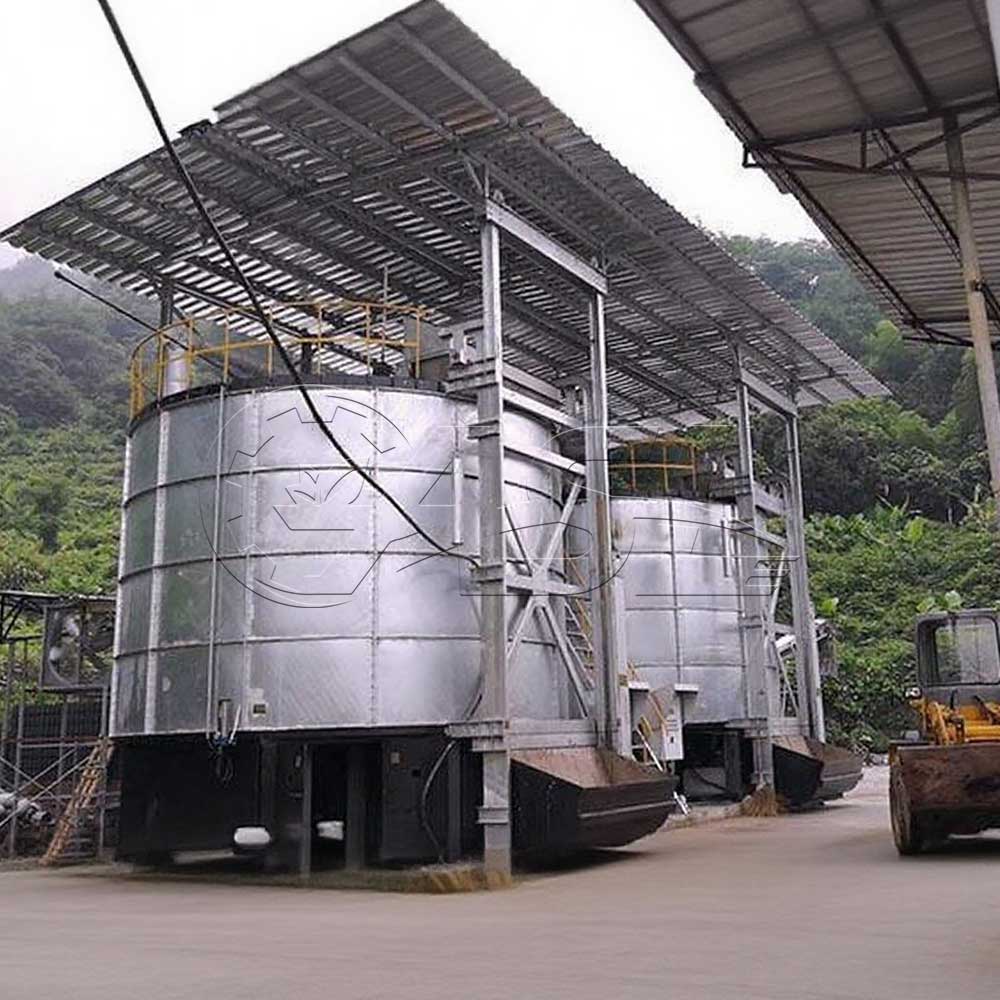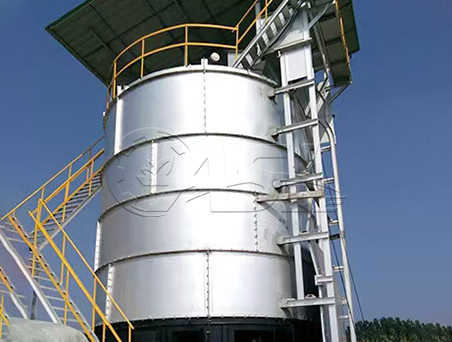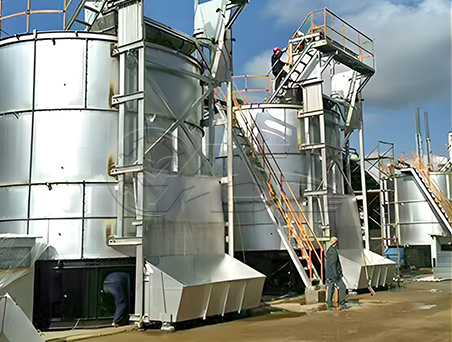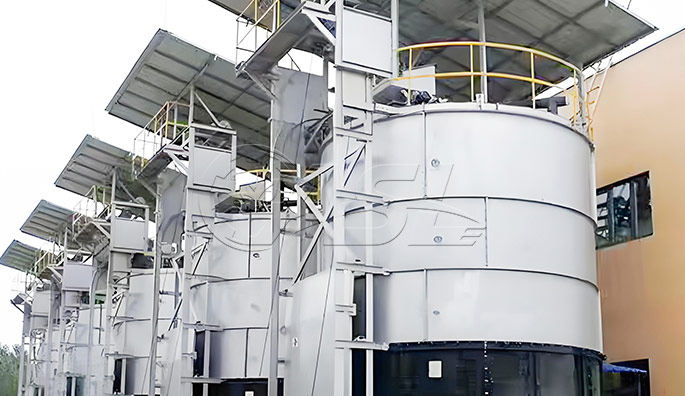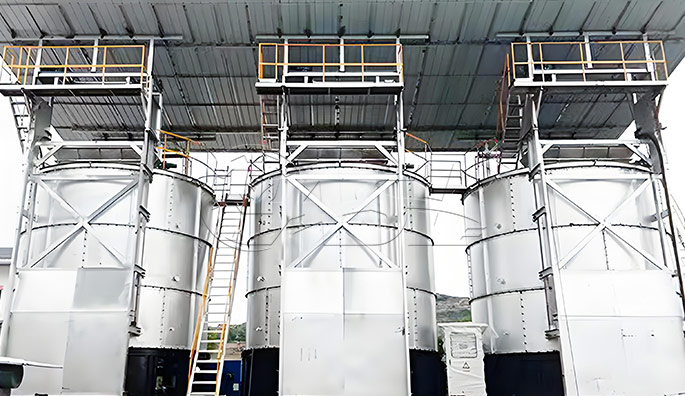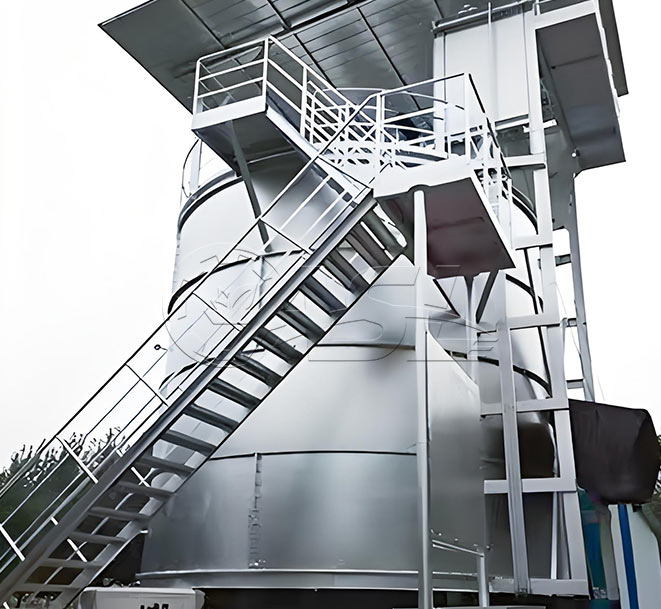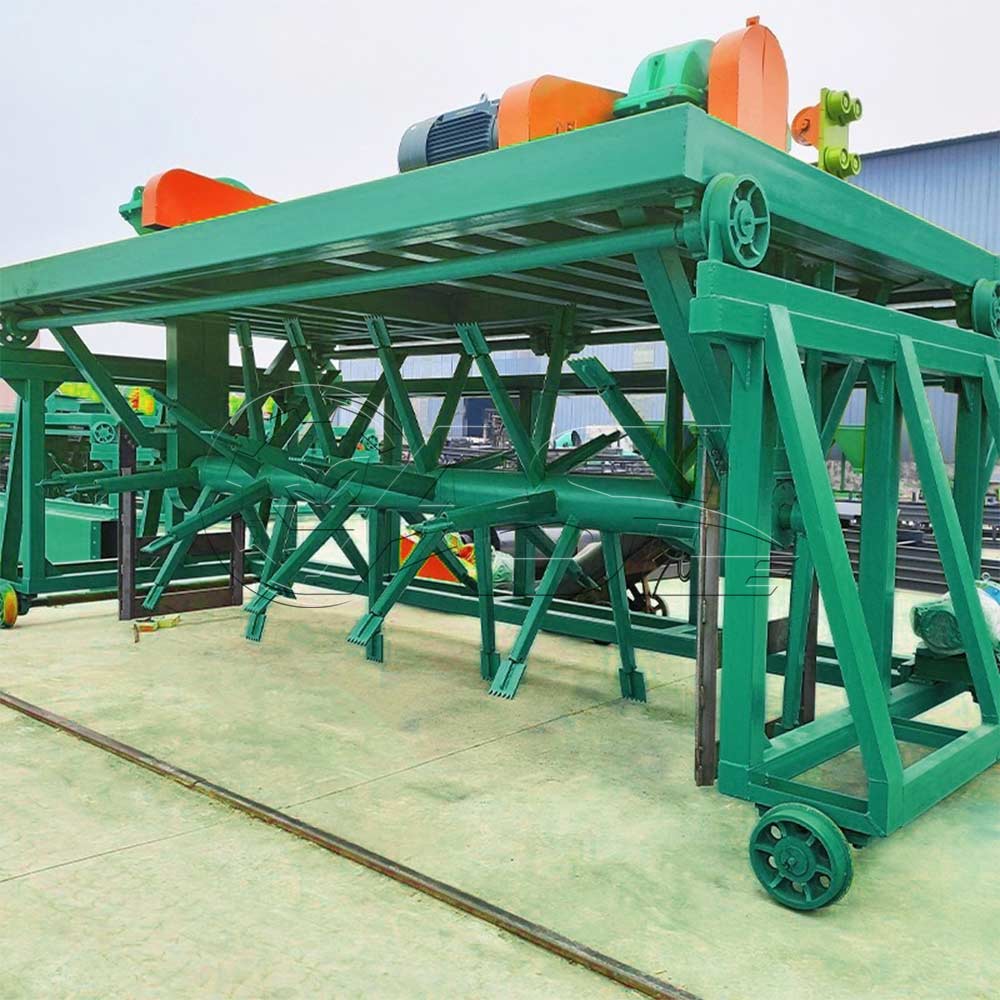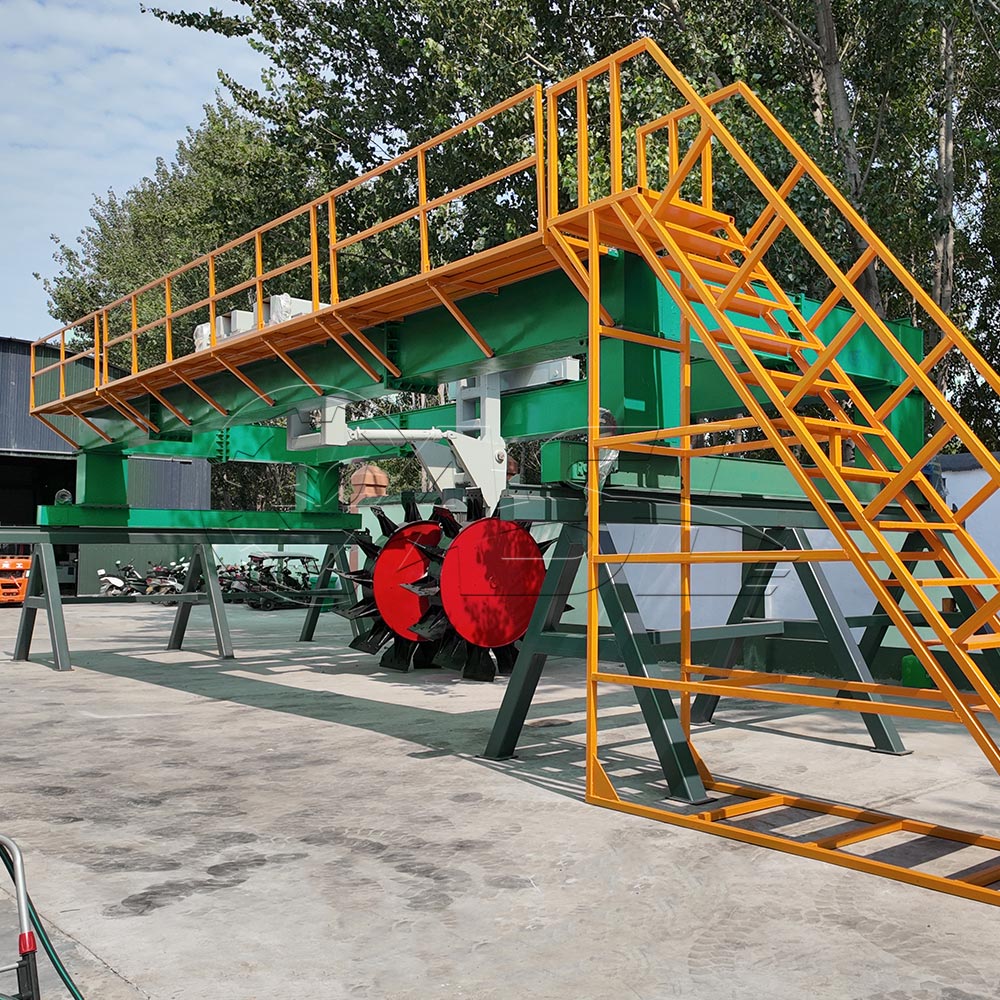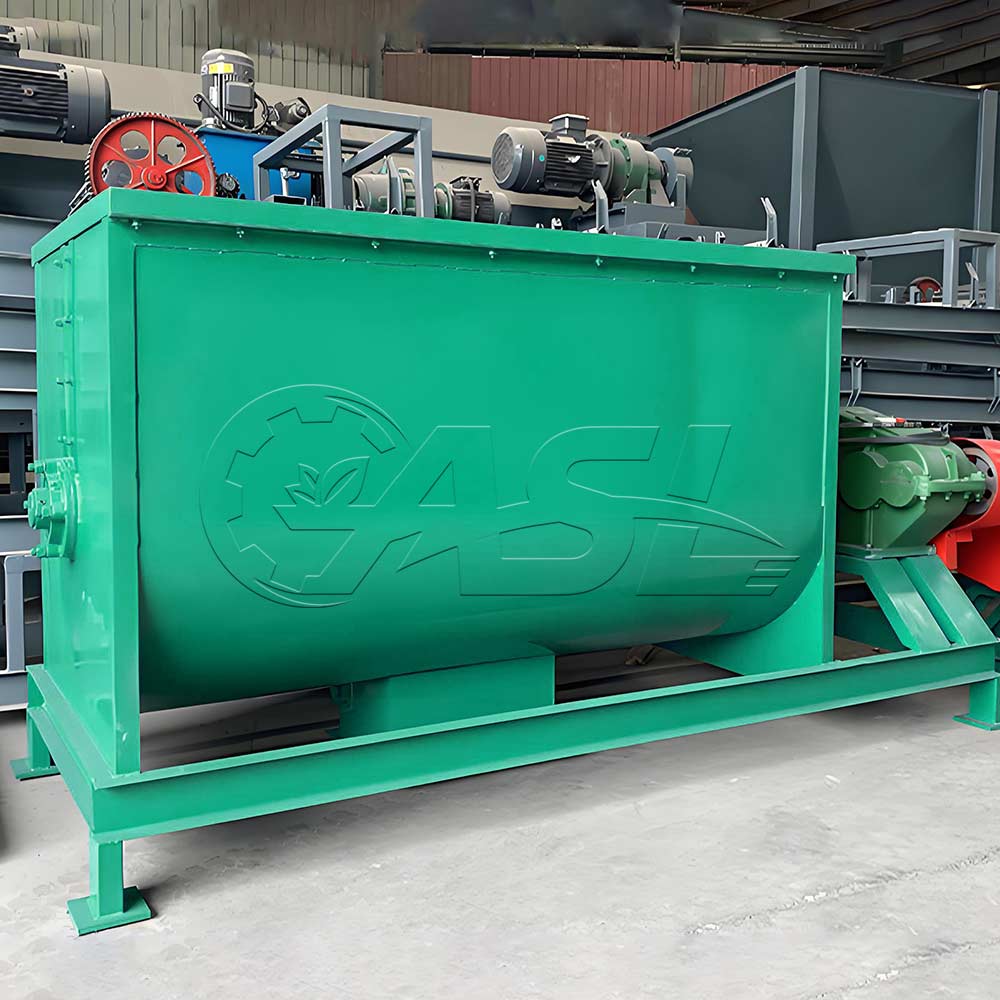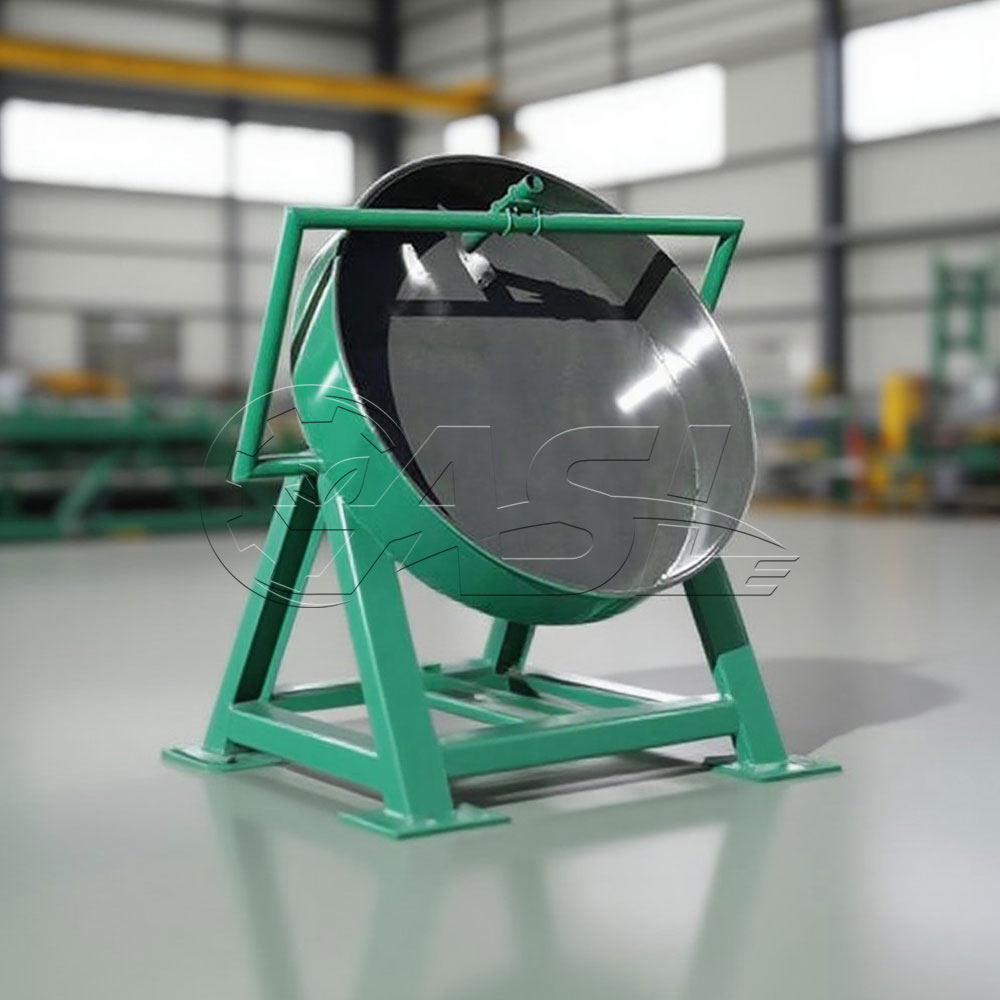What materials are suitable for vertical organic fertilizer fermentation tanks?
Vertical organic fertilizer fermentation tanks are suitable for a variety of organic waste, including livestock and poultry manure (chicken, pig, and cow manure), crop straw, food waste, sludge, fungus residue, and medicinal waste. They are particularly suitable for processing materials with a moisture content of 50%-70%, such as a mixture of manure and shredded straw from small and medium-sized farms. The fermentation environment within the tank allows for rapid decomposition, reducing odor. For materials with high fiber content, they should be pre-crushed to an appropriate particle size (typically 5-10 mm) to improve fermentation efficiency.
What are the unique advantages of vertical fermentation tanks over horizontal fermentation tanks?
The most significant advantage of vertical fermentation tanks is their small footprint. Their vertical structure allows for a large processing capacity within a limited space, making them suitable for small and medium-sized production environments with limited space (such as village organic fertilizer stations and small farms). Furthermore, the material flows by gravity, reducing power consumption and resulting in relatively low operating costs. They offer greater containment, easier collection and treatment of odors and exhaust gases, and improved environmental performance. However, vertical tanks have slightly higher material flow requirements, and optimized agitation is required when handling highly viscous materials.
What factors influence the fermentation cycle?
The fermentation cycle is primarily influenced by the following factors:
① Material properties: High fiber content and low moisture content (<50%) will prolong the cycle and require prior adjustment.
② Temperature control: Maintaining a high temperature of 55-65°C can shorten the cycle, while excessive temperature fluctuations can extend it.
③ Ventilation: Insufficient oxygen can lead to anaerobic fermentation, significantly prolonging the cycle, so uniform ventilation is essential.
④ Agitation frequency: Appropriate agitation (1-2 times per day) accelerates fermentation, while excessive agitation can consume excessive energy. Typically, the fermentation cycle in a vertical tank is 7-15 days, over 50% shorter than open-air composting.
Does operating a vertical fermentation tank require complex techniques?
Modern vertical fermenters often utilize automated controls. Temperature, ventilation volume, agitation time, and other parameters can be set via a touchscreen, and the equipment automatically operates, making operation relatively easy. Operators are only responsible for feeding, regular inspections (e.g., checking material condition and any unusual equipment noises), and discharging. After a brief training period of 1-2 days, they can begin operations. For batch operations, basic knowledge of material proportioning (e.g., adjusting the carbon-nitrogen ratio) is essential to ensure optimal fermentation conditions. For continuous operations, attention must be paid to balancing feed and discharge to avoid tank overload or emptying.
What problems may occur with vertical fermenters, and how can they be solved?
①Stuck agitator: This is often caused by hard objects (e.g., rocks, metal) or agglomeration in the material. Solution: Screen out impurities before feeding and pre-crush materials prone to agglomeration. After shutting down, clear any stuck objects and inspect the agitator for deformation, replacing if necessary.
② Clogged ventilation system: This manifests as insufficient oxygen and abnormally high temperatures within the tank. This is caused by dust from the material clogging the ventilation ducts or filters. Regularly clean the vents and filters to keep the airway clear. Temperature control failure: The heating tube or temperature sensor may be damaged. Check the heating system circuit and replace the damaged heating tube. Calibrate or replace the temperature sensor to ensure temperature control accuracy.
